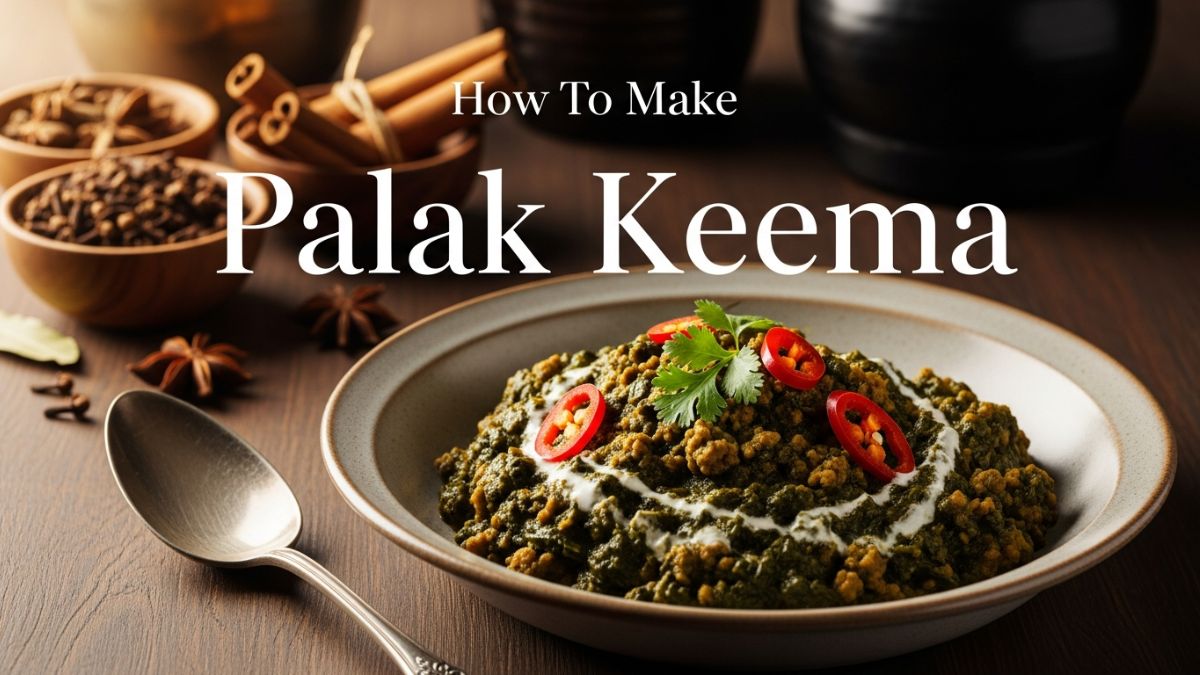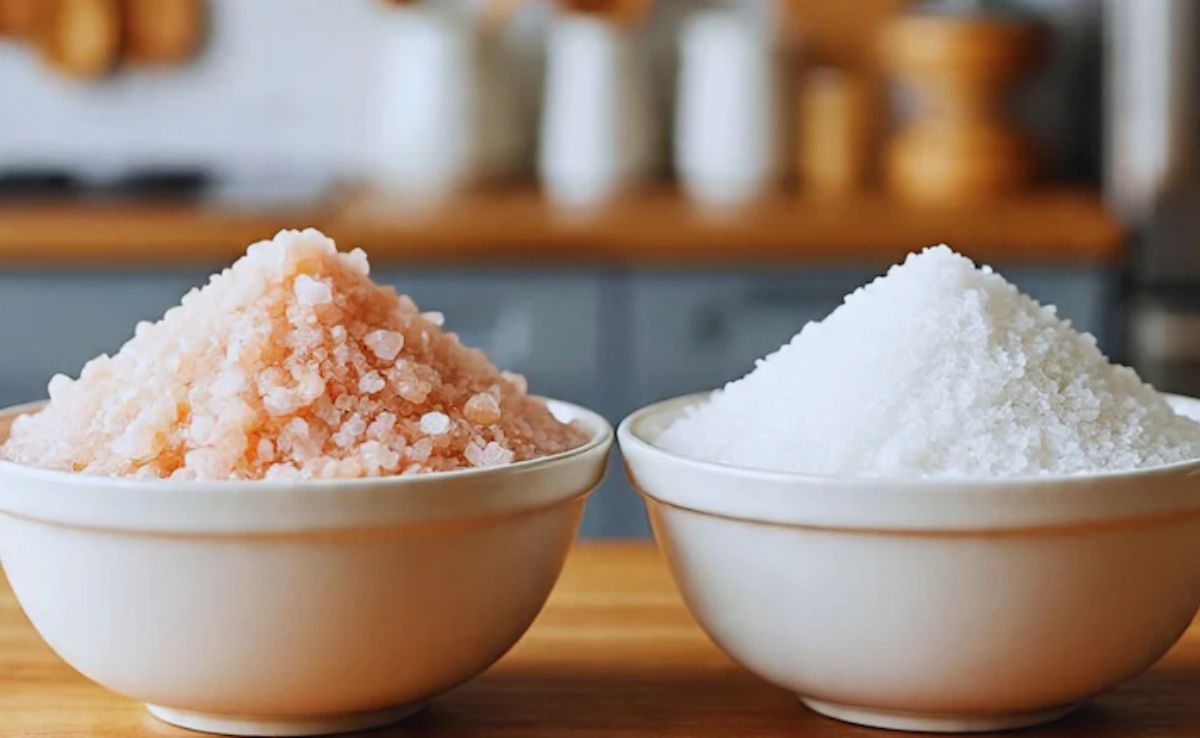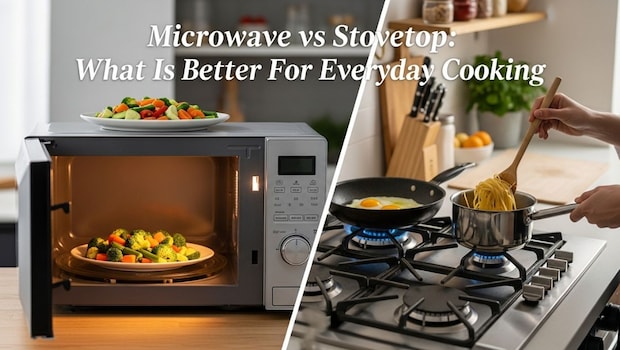Modern kitchens rely on two power players. The microwave has become a quick fix for busy days, while stovetop cooking continues to define home-style meals. But when nutrition, flavour, speed, energy use, and practicality are all on the line, which method should you choose? This comparison helps you decide what to use and when to use it, based on how nutrients behave and how food responds to heat in real cooking scenarios.
What Affects Nutrient Retention In Cooking
Heat, water, and time can change food composition. Vitamins like vitamin C and B vitamins break down quickly. Water can pull nutrients out of foods when boiling. Longer cooking means greater nutrient loss. Keeping more nutrients in a meal is a matter of controlling these factors smartly, no matter the appliance.
Also Read: Steaming Vs Boiling Vegetables: Which Cooking Method Is Really Healthier?

Photo Credit: Pexels
Microwave Vs Stovetop Cooking: Which Is Better For Nutrients, Taste And Speed
1. Nutrient Retention: Which Method Protects More
Microwaves cook food faster with very little water. Less time and less heat exposure help keep vitamins inside the food. On the stovetop, especially during boiling, nutrients leave the food and mix with cooking water. Sautéing and steaming help retain more nutrition, but only when managed carefully.
Winner: Microwave
2. Flavour And Texture: Which Method Performs Better
Stovetop cooking allows caramelisation, browning, and texture control. These changes create deeper flavours, especially in vegetables, grains, meat, and fish. Microwaves tend to steam food internally. The taste stays mild and texture softer, which works well for reheating or steaming vegetables but not for crisp or charred finishes.
Winner: Stovetop
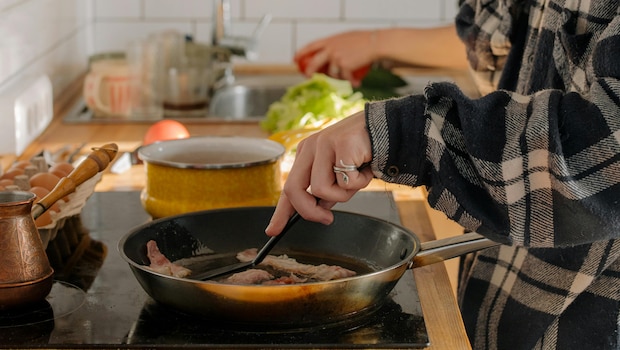
Photo Credit: Pexels
3. Speed And Convenience: Which Method Saves Time
Microwaves heat water molecules from inside the food and finish cooking in minutes. Boiling, sautéing, or pan cooking takes longer and demands attention. Microwaves suit busy routines and single portions, while stovetops take more steps from start to finish.
Winner: Microwave
4. Energy Efficiency: Which Method Uses Less Power
Shorter cooking time means lower energy use. Microwaves waste less heat and direct most energy into the food. Stovetop burners lose heat into the surrounding air and often run much longer.
Winner: Microwave
5. Versatility In Cooking Styles: Which Method Offers More Control
The stovetop supports boiling, steaming, sautéing, frying, simmering, and searing. It allows chefs to adjust heat levels instantly. A microwave cannot sear or brown food and has limited precision. It is ideal for reheating, steaming, and gentle cooking.
Winner: Stovetop
6. Food Safety And Common Myths
Microwave ovens operate using contained electromagnetic waves. There is no evidence of health risks when used properly. The main safety concern is the use of plastic containers that are not microwave safe. Some plastics may release chemicals into food during heating, so appropriate cookware is important on a daily basis.
There is also no radiation exposure risk when the appliance is undamaged and the door seal is clean.
Winner: Tie
Both methods are safe when handled correctly.
Also Read: Vegetarian Protein vs Vegan Protein vs Meat Protein: Which One Works Better For Weight Loss?
5 Best Food Options For Each Method
1. Vegetables
Microwaving vegetables with minimal water keeps more vitamins inside. Stovetop boiling often drains nutrients away.
Winner: Microwave
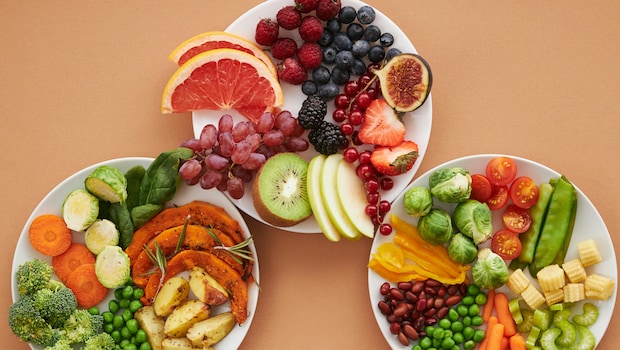
2. Rice And Grains
Cooking rice on a stovetop gives better control over texture and moisture. The microwave is workable for reheating but not always for initial cooking.
Winner: Stovetop
3. Eggs
Microwaves can overheat or explode eggs if not handled correctly. Stovetop boiling or scrambling is reliable and safer.
Winner: Stovetop
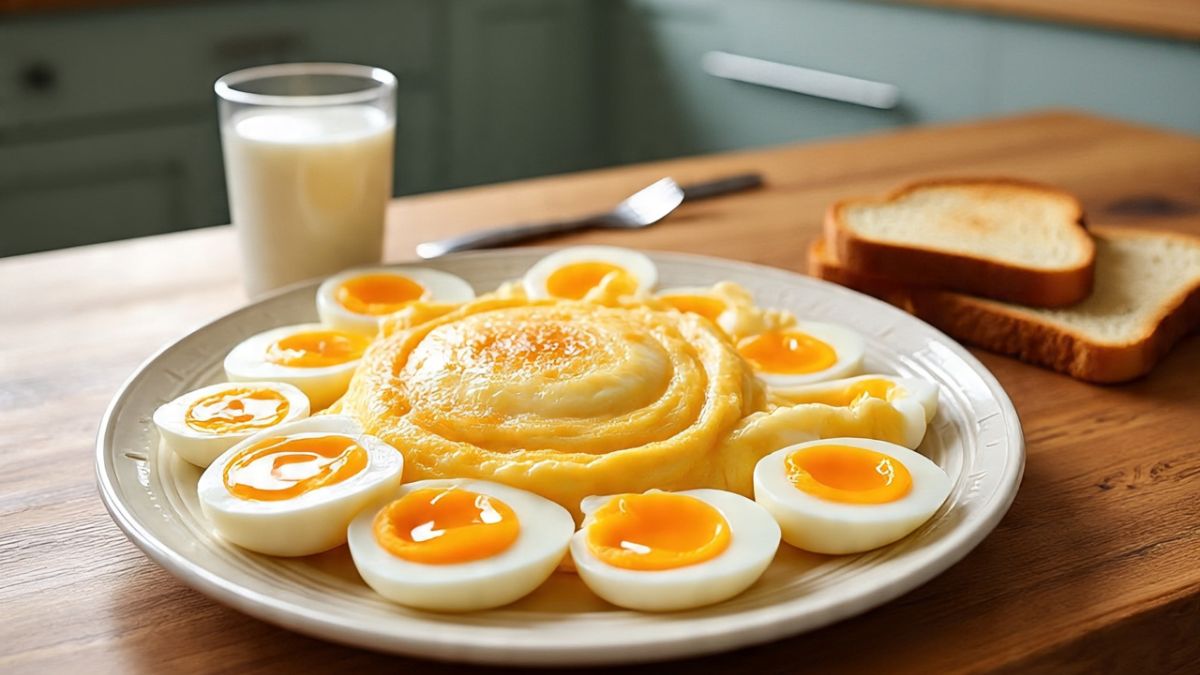
4. Meat And Fish
A stovetop gives browning, moisture control, and food safety reassurance. Microwaves can dry out protein or leave cold spots.
Winner: Stovetop
5. Leftovers
Microwaving leftovers quickly restores heat and moisture. The stovetop may dry food and takes more time.
Winner: Microwave
Microwave Vs Stovetop: Comparison Table
| Cooking Factor | Microwave Cooking | Stovetop Cooking |
|---|---|---|
| Nutrient Retention | High | Medium |
| Flavour And Texture | Moderate | High |
| Cooking Speed | Very fast | Moderate |
| Energy Use | Efficient | Higher energy use |
| Versatility | Limited | Very versatile |
| Suitable For Beginners | Yes | Requires more skill |
How To Keep More Nutrients Regardless Of Method
- Use less water during cooking to avoid vitamin loss
- Cook vegetables until tender, not overly soft
- Keep skins on vegetables whenever possible
- Cut food into larger pieces
- Avoid reheating food repeatedly
- Choose steaming over boiling on a stovetop
These simple adjustments protect nutritional value whether cooking in a microwave or over a flame.
Common Questions About Microwave And Stovetop Cooking
Does microwave cooking reduce nutrients?
No. It usually preserves nutrients better because food cooks faster and with less water.
Is microwaved food safe for daily consumption?
Yes, provided microwave-safe containers are used and food is heated evenly.
Which method is better for vegetables?
Microwaving and gentle steaming preserve vitamins more effectively than boiling.
Does boiling remove nutrients?
Yes. Nutrients can transfer into the cooking water.
Is microwaving healthier than frying?
Yes, since it requires little or no oil.
Is there radiation exposure from microwave ovens?
No. Radiation stays locked inside the machine during cooking.
Can all foods be microwaved
Whole eggs with shells and some processed meats are not recommended for microwaving due to safety concerns.
The Bottom Line
Both methods are valuable in a modern kitchen. Microwaves help retain nutrients, save energy, and speed up mealtimes. Stovetops create better flavour, texture, and cooking flexibility. Choosing the right tool depends on the food in front of you. For foods that shine with steam and gentle heat, microwaves win. For dishes that rely on browning and texture, the stovetop is the better choice. Using both methods thoughtfully results in meals that are nutritious, satisfying, and suited to everyday life.


